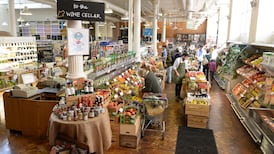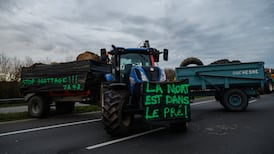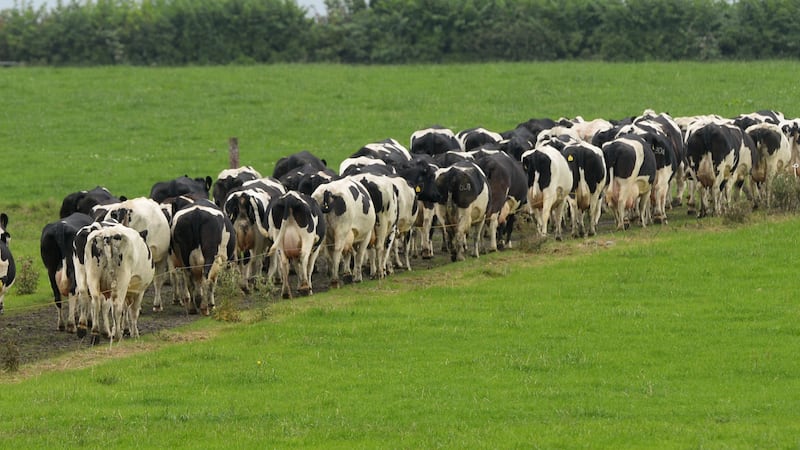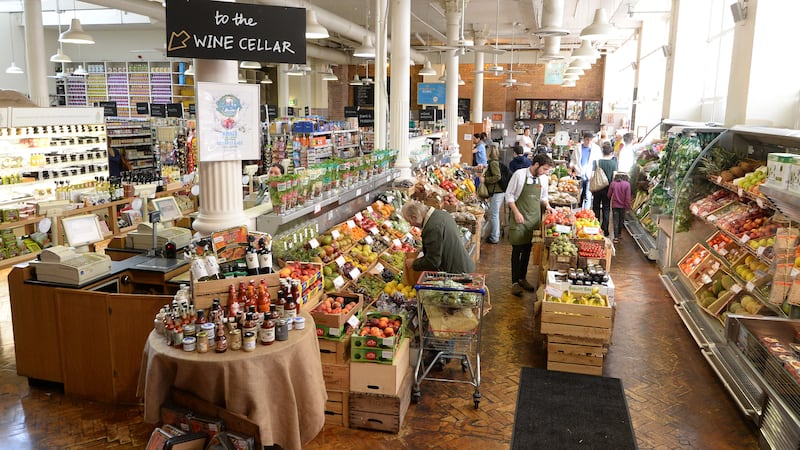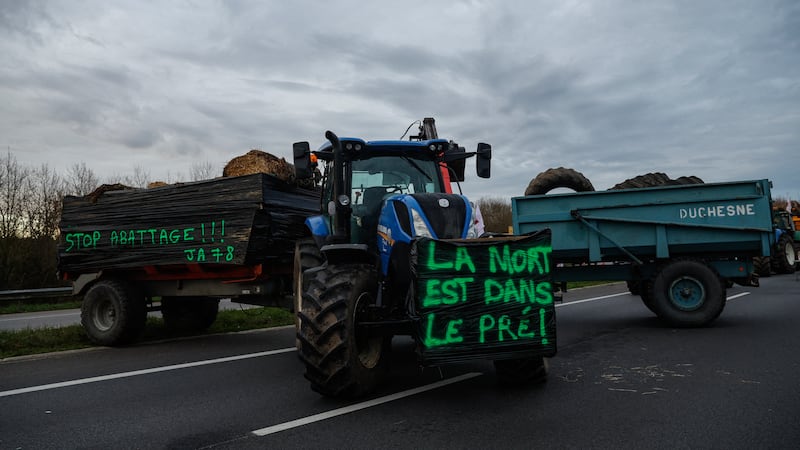On the day this reporter visited the Kerry Group’s under-construction €100 million Technology & Innovation Centre, outside Naas, Co Kildare, two chefs were cooking up a beef pie filling in a “culinary theatre”, or kitchen, in a temporarily-leased premises nearby.
Their job, explained Stephen Macken and Stephen Jameson, was to reduce the amount of cream being used for the filling while keeping the taste and texture the same, and they were using yeast to substitute for the cream. The client, a multinational food company, wanted to reduce costs and the solution being worked on by the chefs would have the additional benefit of reducing the salt content of the product.
A few days previously they had produced five dishes in which cheese and onions were the predominant flavours. Visitors from a global snack producer tasted the dishes before recommending a few changes which the chefs are working on for the next visit. The final result of the exercise will be the choice of a dish which will then be reduced to its dried elements in such a way that a seasoning can be produced that will replicate its flavour in a new line of cheese and onion snacks.
This latter part of the process, reducing a dish to a seasoning that will give a product the exact same taste over a vast geographical area and over an extended time period, is a specialist process that requires people who know what they are doing.
Across the corridor, a number of white-coated food scientists were working on new yogurt, fruit and cereal product that is of interest to one of the world’s best-known restaurant chains and, if it comes to fruition, could become a product that will be familiar to a sizeable proportion of the world’s population.
The Kerry Group, the world's largest player in the ingredients and flavours sector, is primed for growth on the global stage, says Stan McCarthy, chief executive, as he explains the business case for the €100 million centre.
The way he sees it, the food group, formed in Co Kerry in 1972, went out into the world looking for markets and growth, forming alliances with some of the largest food manufacturers and brands on the globe. Now the business is coming full circle with the building of the innovation centre in the Millennium Park in Naas.
It is only because of the strong relationships it has with its global clients that the centre makes business sense – if Kerry’s €4 billion-plus ingredients business is to grow to the next stage, it needs to know what is right for its customers, and how to help them innovate and develop. The closeness with which Kerry works with its customers is such that it has staff “embedded” in some of them.
The decision to locate the centre in Ireland, says McCarthy, was taken for business, as against patriotic reasons. Approximately 50 potential locations around Europe were looked at before Naas was selected. A number of key issues contributed to the decision, including infrastructure, digital access, nearness to Dublin airport, and customers’ attitudes towards Ireland.
“The key issue was the customer lens,” according to McCarthy, who says Kerry’s clients had a positive attitude towards Ireland as an accessible location. The attractiveness of Naas for the staff who will work at the centre and establish homes nearby, was also important.
Different technologies
The centre will support the group's global customers as well as regional operations in Europe, the Middle East and Africa, and replicates an already existing centre in Beloit, Wisconsin. The idea is that customers will come for a one or two-day visit during which they are shown what Kerry has been developing for them, and, crucially, how the new idea will work in production. (The Naas centre is a research centre that can show how the new product can be produced. However, the actual production of product commissioned by clients, takes place elsewhere.)
Kerry plans to maximise its business growth by bringing its different technologies together (ingredients research, production research and so on) when dealing with each of its customers. It is part of its “1 Kerry” project and bringing the global group closer together using technology is key to the success of the plan. The group is currently in year four of a seven-year €350 million SAP software project and Kerry’s integrated ICT system will be managed from Naas, where an estimated 235 staff will be focused on the issue.
The Naas centre is being purposely designed with a campus-type feel and part of its function will be to incubate the talent that will be essential to Kerry’s future growth. New recruits, McCarthy says, have to be well-educated, and prepared to travel.
Already there are approximately 300 university graduates working in temporarily-leased accommodation on the site while the purpose-built complex is under construction in the same business park. It is envisaged that approximately 900 people will be working in the completed complex by its opening in 2015.
A major aspect of the challenge for project manager Ian Howard is to move people and valuable, complicated research equipment from various locations around Europe to the new Naas centre, while allowing Kerry continue with the work these people are doing for its clients.
According to McCarthy, having Kerry’s key research functions all located on one campus, twinned with a capacity to produce new applications on a pilot basis, means a new product that might take two years to come to market, will now take four months. He says no other company has the depth of technology Kerry has, and that the way the group will have the innovation and commercialisation functions on the same campus will be unique.
A key part of the Kerry business is the extent to which it knows and understands its customers' needs. Kerry works with most of the best-known global food brands and the Naas Research & Innovation Centre, he says, will play a key role growing the Kerry business in the EMEA in the years to come.
Kerry Group: By the numbers
The Tralee, Co Kerry-based Kerry Group had revenue of €5.8 billion last year, 71 per cent of which came from its ingredients and flavours business, and
the rest from its consumer foods
activities.
Trading profits last year were 79 per cent from ingredients and flavours, and 21 per cent from consumer foods.
It has operations in 24 countries, sales in 140 countries, and employs 24,000 people.
It is the largest player in the global ingredients and flavours market and spends approximately 4.5 per cent of its revenues every year on research and development.
Ingredients division
The ingredients division develops, manufactures and delivers products for the food, drink, nutritional and pharmaceutical markets.
It produces “excipients”, the part of a pill that delivers a drug into a patient’s system.
Excipients have to get regulatory approval before they can go to the
market.
The investment in the Naas centre is the largest ever in food innovation by an Irish company and is an important part of the Kerry group’s plan to maximise its opportunity for growth by building on its relationship with its customers.





